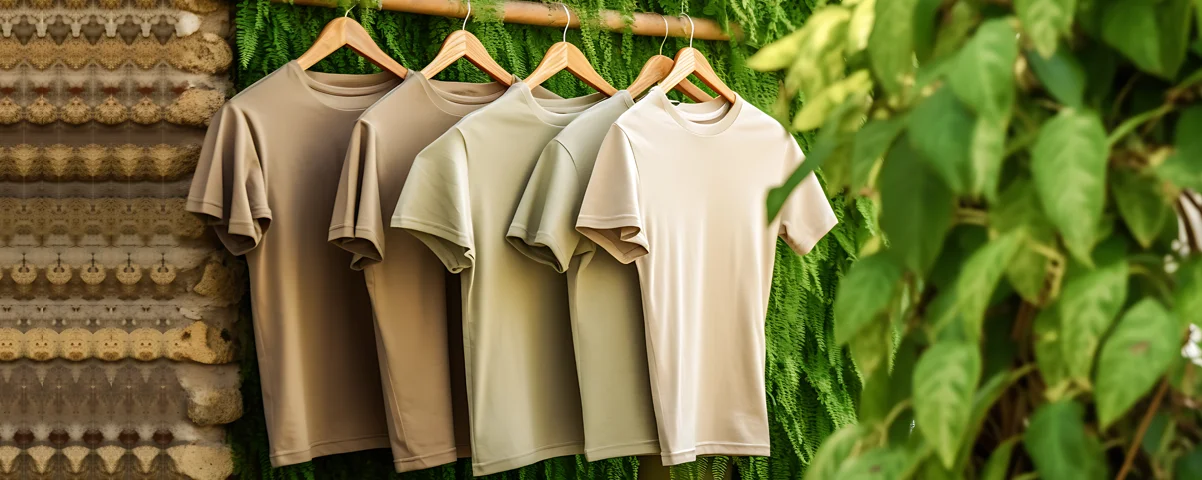Cape Town Sustainable Fashion: Redefining Style with Moral Options
Cape Town Sustainable Fashion: Redefining Style with Moral Options
Blog Article
Keep Ahead of the Curve by Checking Out Ingenious Fashion Patterns
In a sector as dynamic as style, remaining ahead involves even more than just following existing fads-- it requires an exploration of technology. The convergence of innovation and style advertises a brand-new period of customer interaction.

Embracing Smart Textiles
In the last few years, the apparel industry has witnessed a transformative change with the combination of clever fabrics, a cutting-edge technology that mixes modern technology with material. This evolution represents not just a blend of aesthetics and capability however also a considerable jump in the direction of sustainability and personalization in fashion. Smart fabrics, additionally called e-textiles, embed sophisticated electronic devices such as sensing units and conductive strings within the textile, allowing garments to interact with the wearer or the atmosphere.
These fabrics are designed to check physical criteria, such as heart price or body temperature, supplying real-time health and wellness analytics. Past health applications, smart textiles are also being made use of for adaptive clothing, which can alter color or pattern in reaction to ecological stimulations, thus providing a vibrant style experience.
Furthermore, the development of energy-harvesting textiles that create power from motion or sunshine is paving the method for self-dependent wearable innovation. This advancement is appealing to eco aware customers and developers intending to decrease the eco-friendly footprint of fashion. As r & d in this field advance, wise textiles are expected to become increasingly widespread, reshaping the landscape of contemporary fashion with their multifunctional abilities.
The Rise of 3D Printing
Changing the production landscape, 3D printing has actually emerged as a game-changer in the garment industry. This cutting-edge modern technology has made it possible for developers to push the borders of creative thinking, producing complex and customized garments that were formerly unimaginable. By leveraging electronic layout and additive production, 3D printing helps with the development of intricate geometries and patterns, enabling developers to trying out brand-new appearances and structures.
A significant benefit of 3D printing in fashion is its capacity to create on-demand, lessening waste and decreasing supply needs. This performance not only maximizes manufacturing procedures but also enables for rapid prototyping, enabling developers to bring their visions to life in a shorter duration. Moreover, 3D printing supports personalization to a degree unrivaled by conventional approaches, offering customized fits and one-of-a-kind designs customized to individual consumer preferences.
The rise of 3D printing has actually also democratized fashion, making it easily accessible to emerging designers who can now fabricate high-quality pieces without significant financial investment in typical manufacturing infrastructure. As modern technology remains to advancement, the apparel industry is poised to harness the full capacity of 3D printing, discovering new materials and techniques that will most certainly redefine just how style is conceived and created.
Sustainable Style Technologies
As the apparel industry grapples with journalism requirement for ecological duty, sustainable fashion developments have actually arised at the leading edge of transformative change. The growing awareness of ecological influence has sustained a shift in the direction of even more eco-conscious practices and materials. Designers and brand names are currently focusing on sustainability, integrating approaches that reduce waste and reduce carbon impacts.
One substantial growth is the surge of round style, which emphasizes recycling and upcycling to expand the lifecycle of garments. This technique not only lowers waste yet likewise urges consumers to embrace a much more mindful strategy to clothing usage. In addition, using lasting products, such as organic cotton, hemp, and recycled polyester, has acquired traction. These materials call for much less water and power throughout production, considerably reducing ecological influence.
Another breakthrough exists in the adoption of cutting-edge dyeing methods that make use of waterless processes or all-natural dyes, therefore read more minimizing the vast quantities of water and chemicals generally used in fabric dyeing. In addition, developments in biotechnology have actually caused the development of lab-grown natural leather and textiles, providing cruelty-free and eco-friendly alternatives to traditional materials. With these introducing efforts, the fashion business is making meaningful strides towards a more sustainable future.

Tech-Integrated Clothing
Tech-integrated clothing represents an innovative blend of fashion and innovation, improving just how people interact with their clothes. This ingenious domain is marked by the addition of clever fabrics and embedded digital parts, enhancing both performance and aesthetic allure. From health and fitness trackers installed in sports apparel to heated jackets regulated using smart device apps, tech-integrated clothing offers consumers unprecedented ease and flexibility.
Pioneering brand names are driving this trend, concentrating on producing garments that react to environmental stimulations or user commands. For example, some garments can alter shade or pattern in feedback to temperature changes, while others integrate biometric sensing units to keep track of wellness metrics like heart price or anxiety degrees. The seamless integration of modern technology right into fabrics likewise includes environmental sustainability, with efforts to develop self-cleaning materials or garments that adapt to climate condition, hence decreasing the requirement for several layers.
Furthermore, the advent of wearable modern technology is not simply limited to clothes yet includes devices like watches and eyewear, further widening the extent of tech-integrated style. As the market continues to introduce, the possibility for modification and personalization in garments grows, offering customers distinct, tech-enhanced style experiences that accommodate their individual needs and choices.
Future of Virtual Fashion
Over the last few years, the future of online style has emerged as a transformative force within the industry, leveraging advancements in digital innovation to redefine just how style is created, experienced, and consumed. By integrating augmented reality (AR), online truth (VR), and 3D layout devices, designers can now craft interactive and immersive experiences that transcend typical fashion limits. Digital fashion enables for the development of garments that exist solely in digital atmospheres, supplying endless opportunities for advancement without the limitations of physical production.
This electronic change not just provides chances for creative expression yet additionally addresses sustainability issues integral in standard fashion methods. Cape Town Sustainable Fashion. By eliminating the need for physical sources, online style lowers waste and minimizes carbon footprints. Moreover, the rise of virtual style straightens with the enhancing customer demand for special and customized experiences, as online garments can be personalized and tailored to private preferences effortlessly

Final Thought
The style sector's future lies in the integration of cutting-edge innovations and sustainable methods. Digital fashion is positioned to redefine customer communications.
In recent years, the style market has actually seen a transformative change with the assimilation of wise fabrics, an innovative advancement that blends innovation with fabric.As the fashion sector grapples with the pressing requirement for environmental obligation, lasting fashion advancements have emerged at the center of transformative modification.In current years, the future of digital style has arised as a transformative pressure within the see this site market, leveraging innovations in electronic modern technology to redefine just how fashion is developed, experienced, and eaten. The surge of digital fashion straightens with the enhancing consumer demand for customized and distinct experiences, as virtual garments can be personalized and tailored to specific choices with ease.
The style sector's future lies in the assimilation of sustainable techniques and ingenious innovations.
Report this page